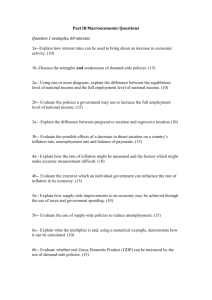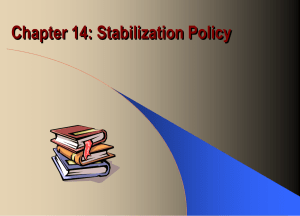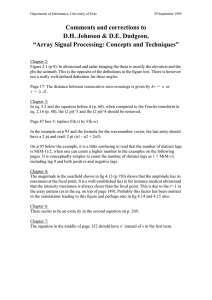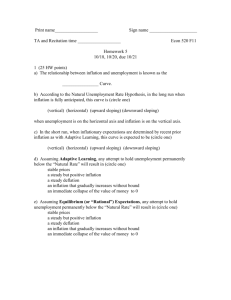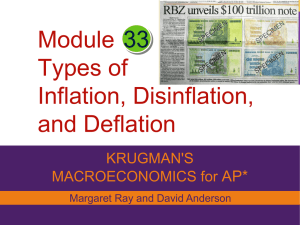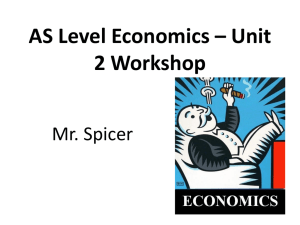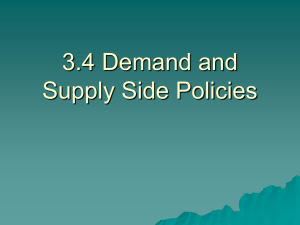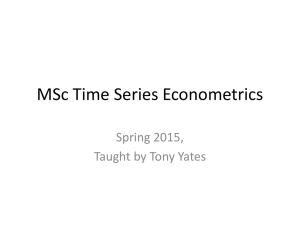Section 3.4.3 - Mr. Lee GWHS
advertisement
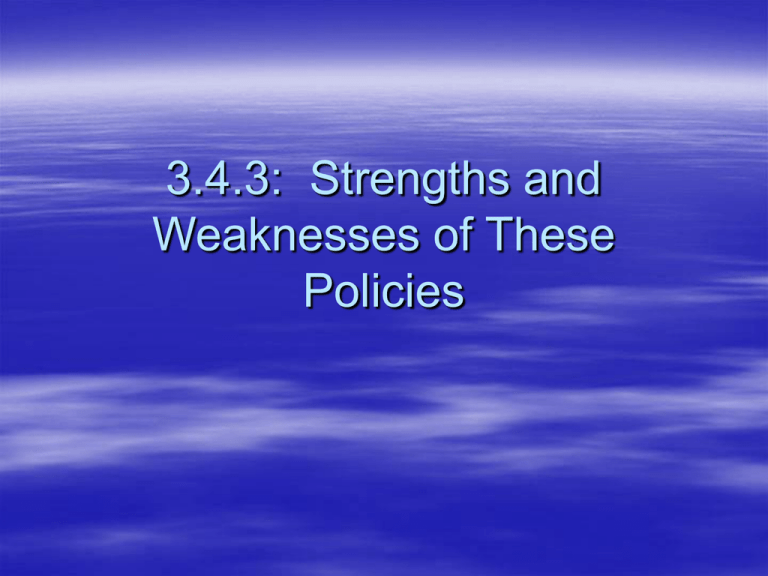
3.4.3: Strengths and Weaknesses of These Policies Demand-Side Strengths Monetary and Fiscal Policies – Tools to influence Economic Activity/Output Unemployment Inflation Trade Balance /Exchange Rates Automatic Stabilisers – Minimize volatility Discretionary Fiscal Policies – Allow govt. to steer socio-economic goals – Social redistribution Demand-Side Weaknesses 1. Trade-off problems – Unemployment vs. inflation – inflation vs. growth – Deficit spending vs. unemployment – Growth vs. trade balance – Interest rates vs. exchange rates 2. Time lags and Political Influences – Govts can make things worse – “Fine tuning” doesn’t work because of lags Identification lags Implementation lags Effect/Impact lags – Might be worse than expected 3. Classical Economists Critique – A. Inflation vs. Long Run Growth Lowering inflation (Demand-side effective) Increasing Growth (Supply-side effective) – Lowering unemployment – B. D-Side Policies lessen Efficiency Govt. spending inefficient Production incentives more effective – Lasting benefits to economy – Increased LR output – Market clearing full-employment C. Peoples Expectations are Rational – People will see that inflation is eroding real wages. Weaknesses of Supply-Side Negative Effects on Society – Poor, uneducated – Older workers Incentive Function of Tax Cuts is Limited – Opportunity Costs Social Costs – – – – – Increase Budget Deficits Less transfer payments for poor SR increased unemployment (lower AD) Income distribution inequality Hurts long run potential Imperfectly Functioning Markets – Markets won’t clear Need for govt. intervention
